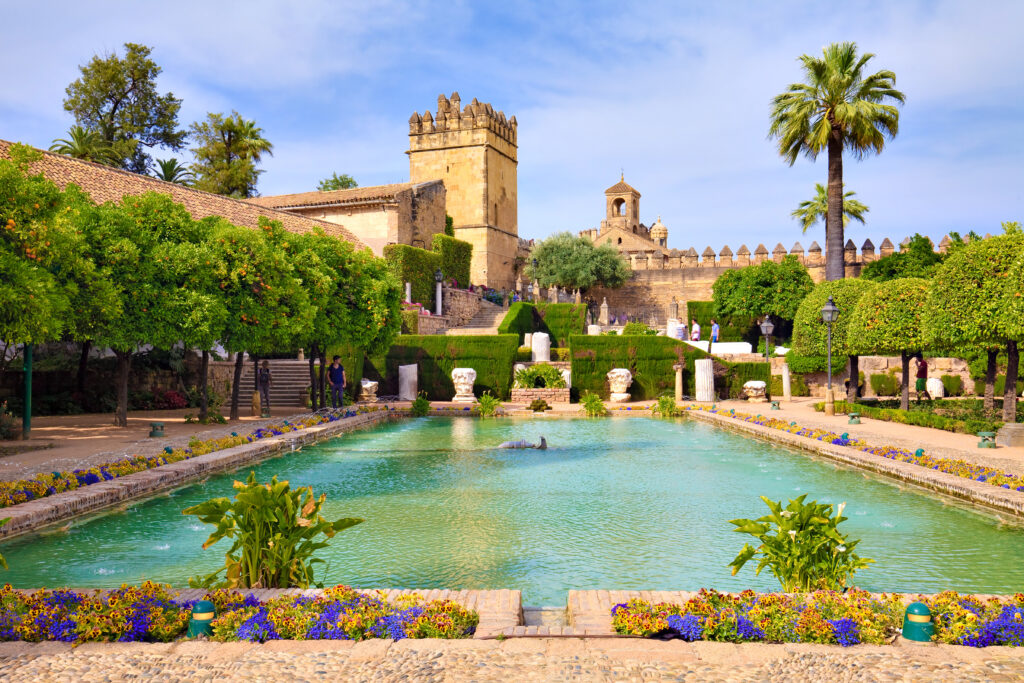
Andalusia is just waiting to reveal its treasures. Let's do it proud and discover Cordoba, one of Spain's 21 must-sees, where period monuments retain a strong Roman and Islamic influence. From the Cordoba Mosque to the Royal Stables and the Roman Bridge, let yourself be swept away on a journey through time like no other. Discover the 15 must-sees and must-dos in Cordoba on your trip to Andalusia.
1. Alcázar De Los Reyes Cristianos, Cordoba's nugget of light
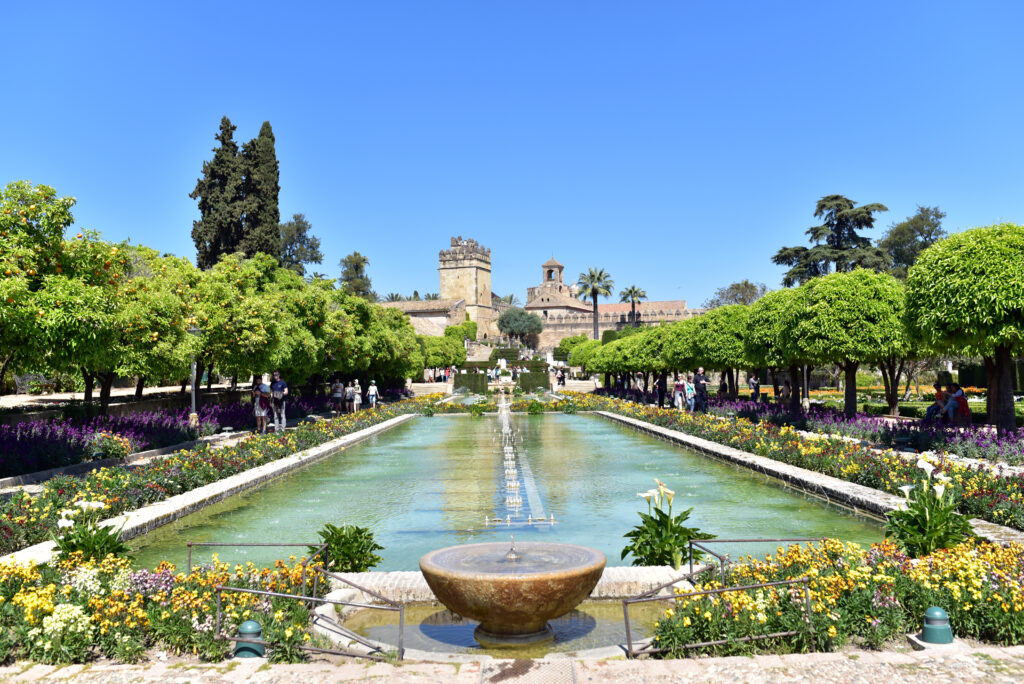
This is THE visit to Cordoba not to be missed! Nestled in a verdant park, the Alcázar de los Reyes Cris tianos (Alcázar of the Catholic Kings) offers a glimpse into Cordoba's history. As its name suggests, it was home to the Catholic kings for a time. Later, it served as the seat of the Inquisition. Its history is rich, leaving us with an equally rich visit today. The grounds are simply magnificent!
If the exterior is a veritable enchantment of color, the interior also has some surprises in store. Here you are, discovering a remarkable historic building, surrounded by 4 beautiful towers:
- Homenaje,
- La Inquisición,
- Los Leones,
- Las Palomas.
Beautiful mosaics, a superb 3rd-century sarcophagus, and well-preserved halls marvel the senses. Only one or two days to visit Córdoba? Don't miss out on this exceptional place! We recommend you book this guided tour , which includes a visit to the Alcázar de Los Reyes Cristianos, the Cordoba Synagogue and the Cathedral Mosque of Cordoba.
If you prefer, you can also book this guided city tour by bus you'll make 27 different stops around the city, getting on and off at your own pace.
2. Cordoba's Mosque-Cathedral, an eventful history
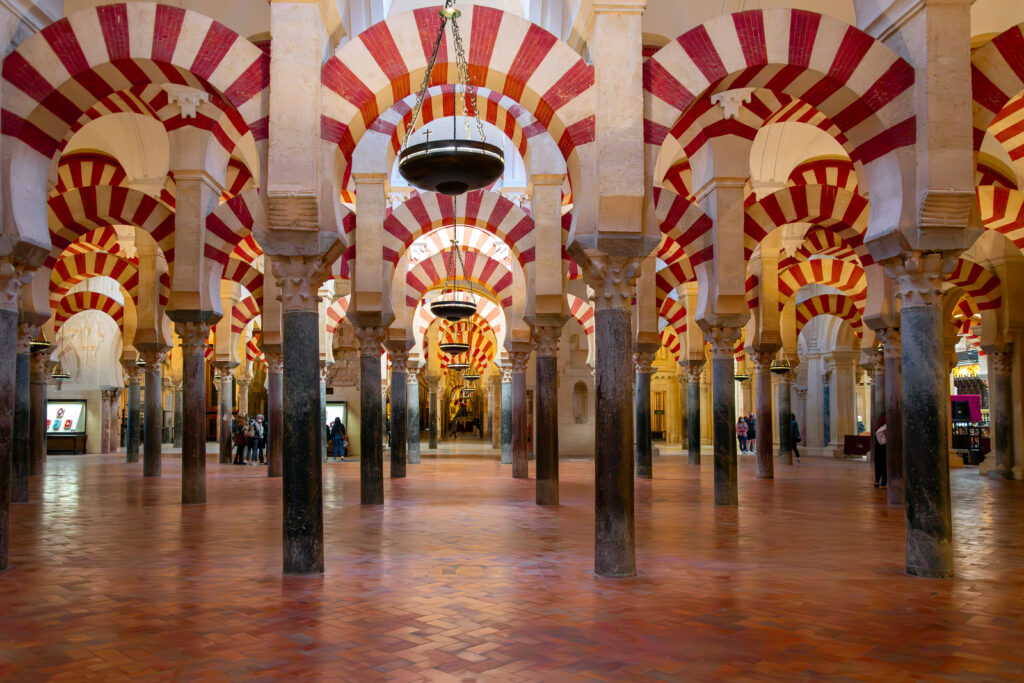
The Mosque-Cathedral of Cordoba leaves you speechless when you set foot in this vast hall with its 1001 colorful columns. Expanded several times over the centuries, the building's eventful history continues to this day. After the Muslim conquest of Spain, a mosque was built on the site of a cathedral. After the country was reconquered by the Catholics, the building was returned to the hands of the Church, hence its surprising double name. Even today, Cordoba's Mosque-Cathedral is the subject of debate, as the church has emphasized its Catholic rather than Muslim side since it was consecrated in 1236 by the Spanish king. What will become of the rest of the story? No one knows, but one thing's for sure: this religious building is a must-see in Cordoba! Avoid the wait at the entrance by booking your guided tour of Cordoba's Mosque-Cathedral here .
3. The Royal Stables, from visits to horse shows
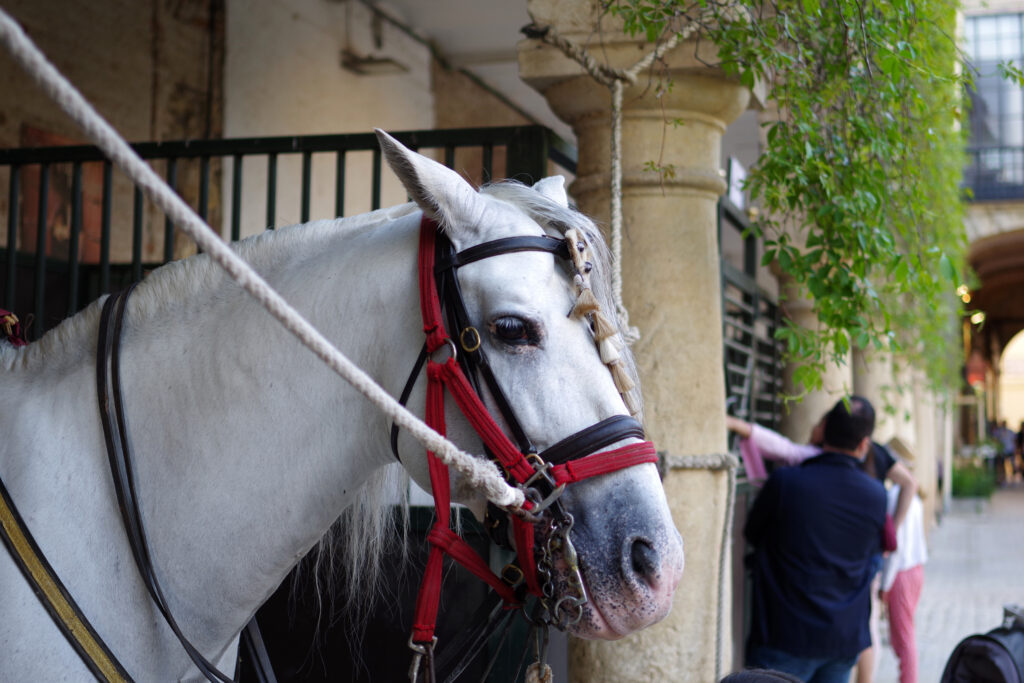
Another magnificent historic building to contemplate without moderation! Located next to the Alcazar of the Catholic Monarchs, the Royal Stables were built in 1572 at the request of King Philip II. Their original purpose was to breed and train exceptional Andalusian and Arabian horses for the Royal Household. A mission accomplished beyond all expectations, as the stables continue to operate today. Today, this superb building, designed by Grand Squire Diego López de Haro, welcomes visitors with a passion for equestrian shows. Suitable for all ages, the "Passion and Magic of the Andalusian Horse" show is an enjoyable experience for the whole family. Add to this a visit to the stables themselves, and you've got a visit that's as beautiful as it is complete.
4. La Judería, Cordoba's Jewish quarter
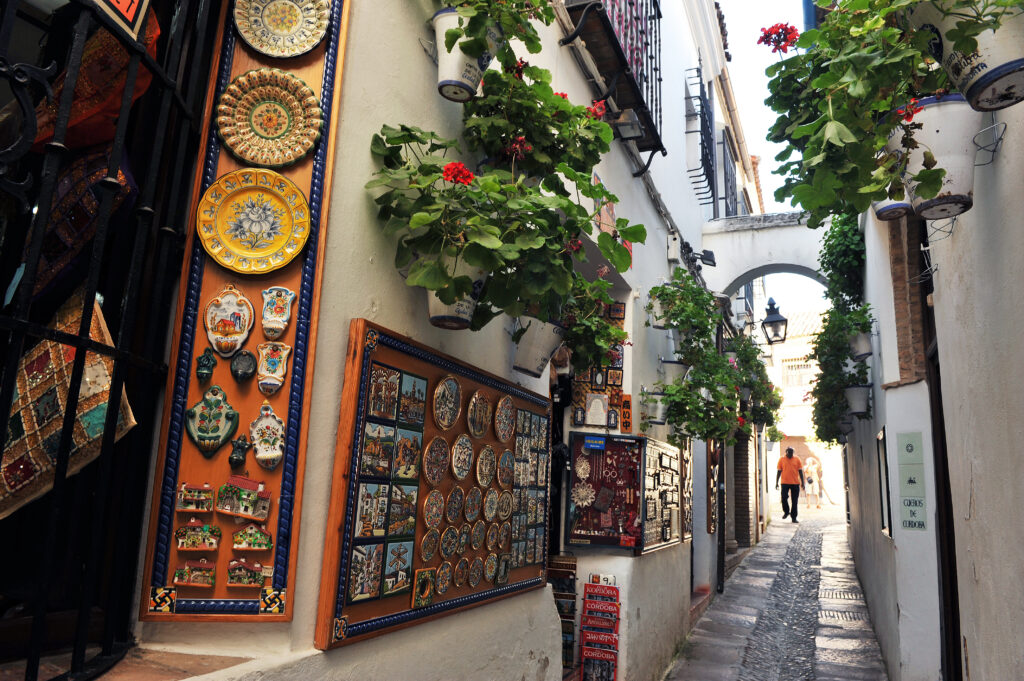
Your visit to Cordoba takes you to La Judería, the city's Jewish quarter, a UNESCO World Heritage Site since 1994. Bounded by the Puerta de Almodóvar and the Mosque-Cathedral, it extends as far as Calle Rey Heredia to the east. This area was protected by walls, notably the Porte de Malburguete. Even then, not all Jews lived here exclusively. From 1260 onwards, some of them settled in neighboring districts, such as San Salvador and San Andrés, which you may also want to visit on your trip to Cordoba. Among the main points of interest to be seen in the Jewish Quarter are :
- La Casa de Sefarad, a museum dedicated to Cordoba's Jewish population,
- the Calleja de Las Flores, recognized as the most beautiful street in Spain,
- the Sinagoga de Córdoba, one of the city's main religious buildings,
- the Zoco Municipal de Córdoba, a craft market,
- the Muralla del Castillo de la Juderia.
The district forms a truly captivating labyrinth, where you can stroll hand in hand or with your family. Punctuated by colorful old buildings, the visit is pure enchantment. To make the most of it, we recommend you book this guided tour of the Jewish Quarter and the Mosque-Cathedral .
5. Stroll along the Roman Bridge over the Guadalquivir River
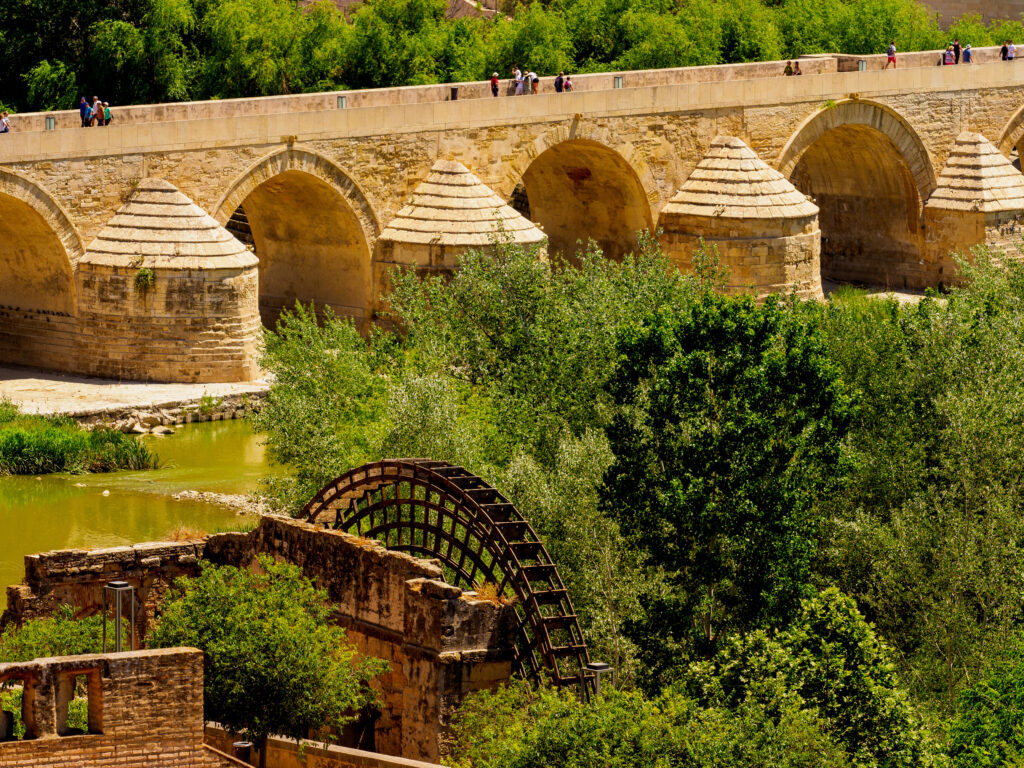
Let's stay in the neighborhood a little longer, as the Roman Bridge is located behind the Cathedral-Mosque. Its strong point? Its ability to retain all the charm of yesteryear: it's simply sublime! Your short walk takes you to the Tour de la Calahorra, and why not to the banks of the Guadalquivir for a bucolic stroll along the water's edge. During this stroll, you'll be able to take some of your most beautiful travel shots.
Tip by Petit Futé: at the end of the day, as the sun declines over the horizon, the surroundings take on magical colors, ideal for a romantic stroll.
6. The synagogue, witness to Cordoba's cultural diversity
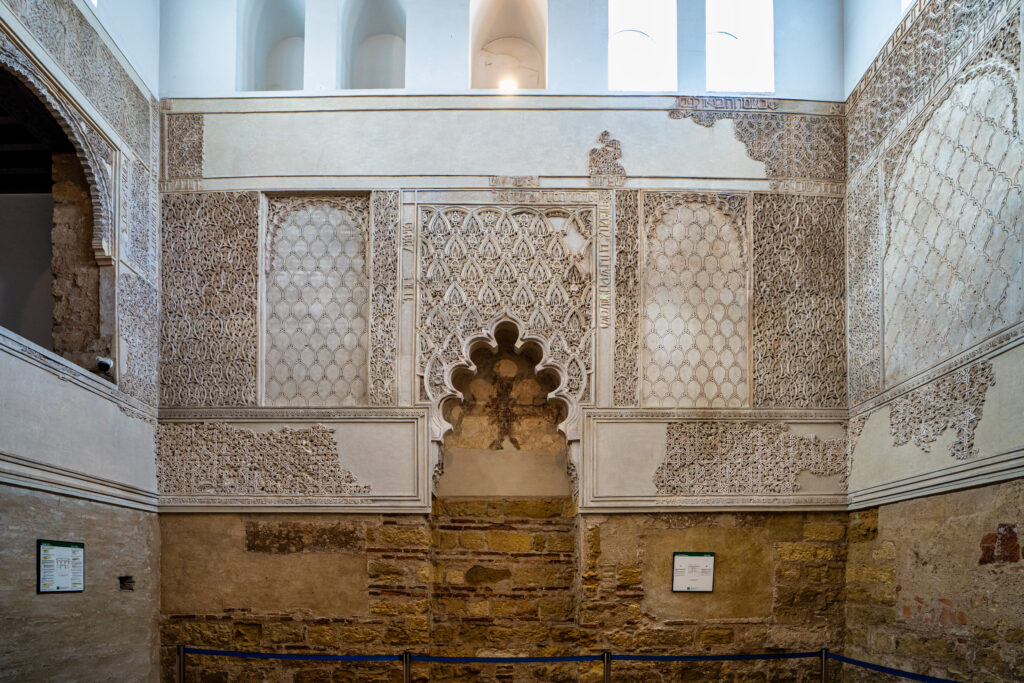
We mentioned it in the Juderia, but it deserves our full attention. The superb Cordoba synagogue in the city's Jewish quarter, declared a National Monument in the XIXᵉ century, boasts exceptional architecture. Among the best preserved in medieval Spain, it is unique in Andalusia. Its construction dates back to the early XIVᵉ century, with the aim of providing a place of worship for the Jews. As soon as you arrive, you set foot in a pretty vestibule leading to the main hall, adorned with Mudejar stucco and supported by three beautiful arches. Splendid!
A little background information : after the expulsion of the Jews in 1492, it was used as a hospital, then as the hermitage of San Crispín, before becoming an elementary school.
7. The heart of Cordoba and Plaza de la Corredera
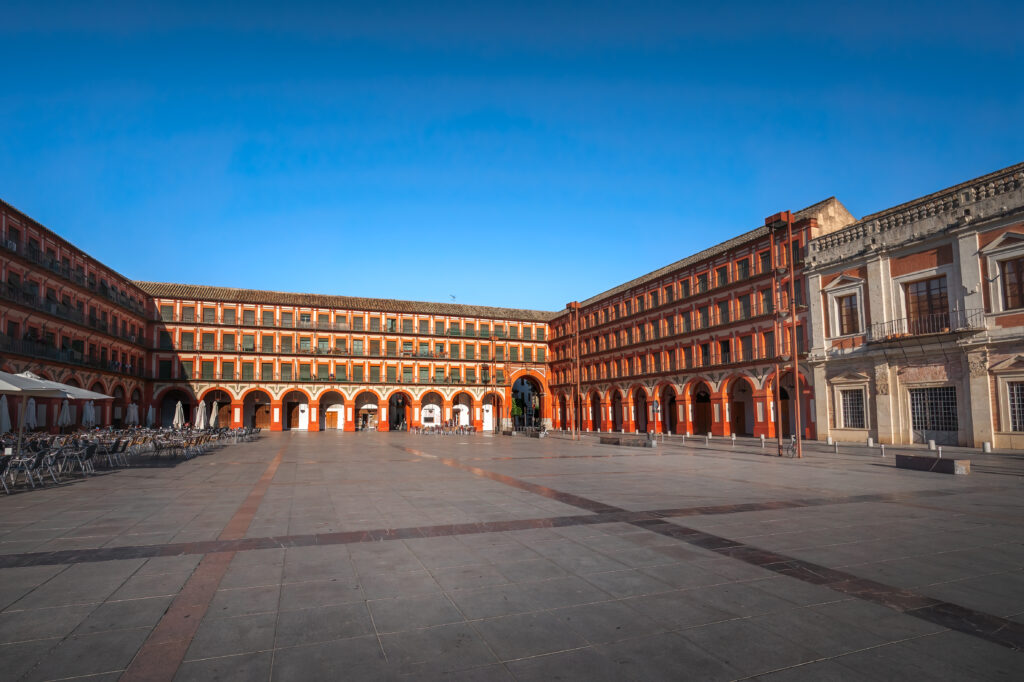
In the heart of Cordoba, there are several squares to visit. Among them, it's impossible to miss the Plaza de la Corredera, surrounded by exceptional period buildings designed by Salamanca's Antonio Ramos. Getting to this square is an unusual experience, as you'll have to pass through arched passageways known as Arco Alto and Arco Bajo. While the square has a rich history, it is now home to a variety of the city's events. For example, you can visit the Mercado de la Corredera, open every morning except Sunday, where you can stock up on fresh local produce in a friendly atmosphere.
8. Madinat al-Zahra, immersion in a medieval caliphal city
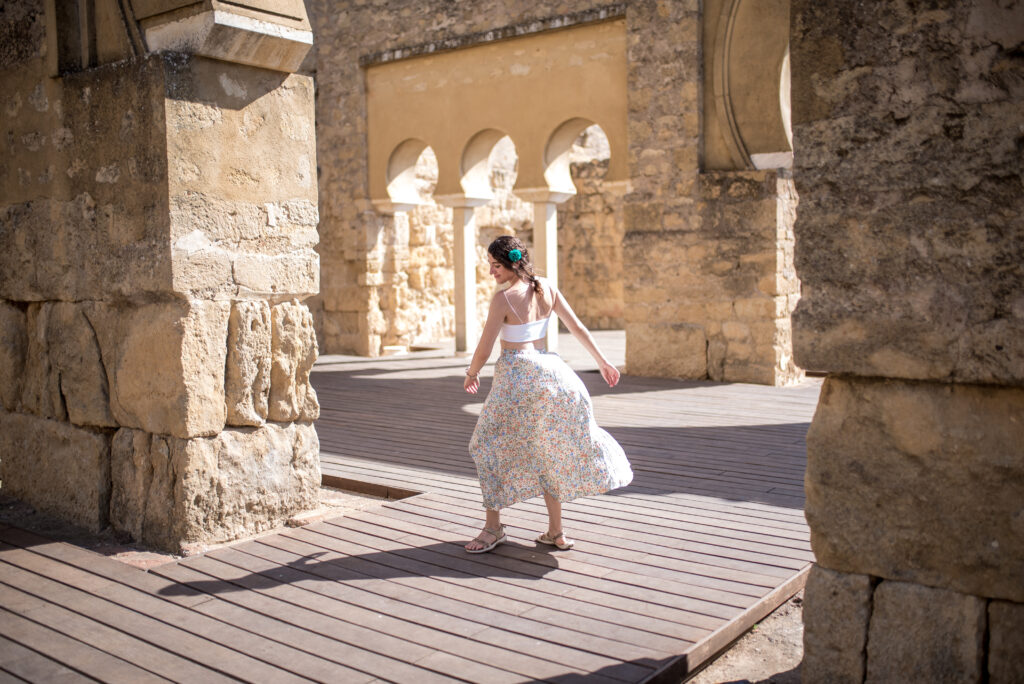
Make way for an archaeological site listed as a UNESCO World Heritage Site: Madinat al-Zahra, an urban complex dating from the Caliphate period in Cordoba. On the menu: a glimpse of the Islamic civilization of Al Andalus. Built under Abd al-Rahman III, the medina was more a symbol of grandeur than an actual city. Surrounded by walls, it served as a royal and administrative residence, where sumptuous festivals were held. After only 70 years of activity, internal wars finally reduced this exceptional city to ruins. Your visit is divided into two parts. On the one hand, you visit a museum, where you can discover artifacts from archaeological excavations carried out on site. This is followed by a tour of the site, including visits to the houses, stables and royal salons.
Click here to book your guided tour of the Azahara Medina and discover the history of this fascinating site!
9. Museo Julio Romero de Torrez and Museo de Bellas Artes, showcasing local art
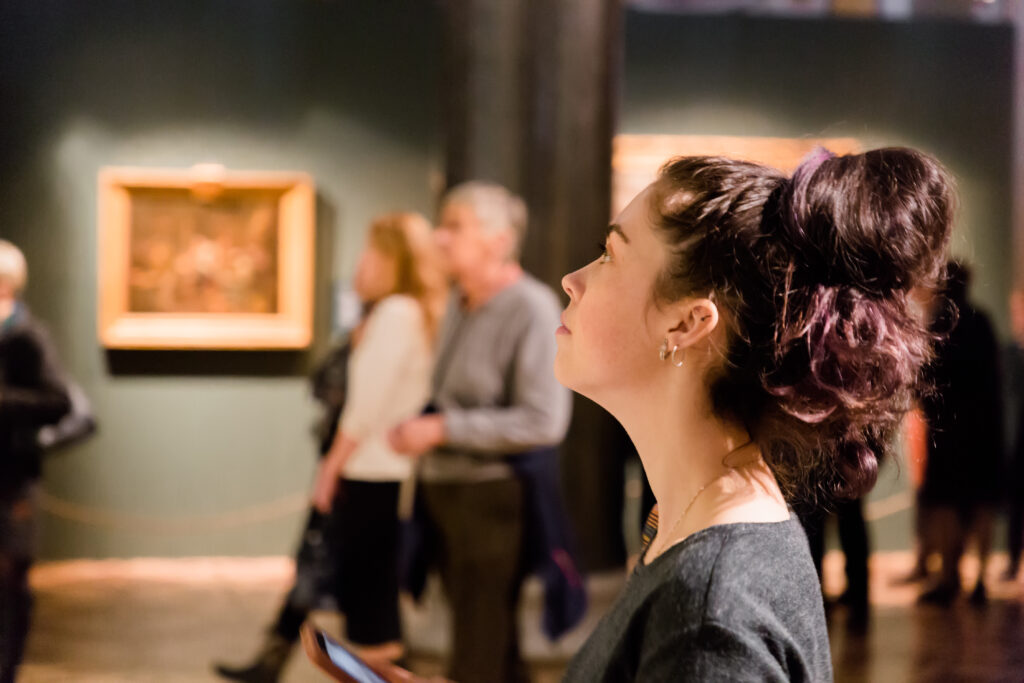
Embark on a plunge into the Cordovan art world at the Julio Romero De Torrez Museum, exhibiting works by the artist of the same name. In 6 well-organized chronological rooms, you can relive his life's work, from La Chiquita Piconera to Naranjas y Limones and Poema a Cordoba. Each piece finely depicts the evolution of his style and the Andalusian cultural influences that shaped his work, offering a profound insight into regional identity through his art.
In the same building, the Musée des Beaux-Arts exhibits the evolution of local painting and sculpture from the 14th to the 20th century. It highlights Andalusian Baroque painters such as Zurbarán, Antonio del Castillo, Valdés Leal and Palomino. The visit also includes works by Jiménez Aranda and Sorolla, as well as a rich collection of drawings.
A double discovery of artistic culture, to be discovered at Plaza del Potro.
10. Relaxation in El Arenal Park
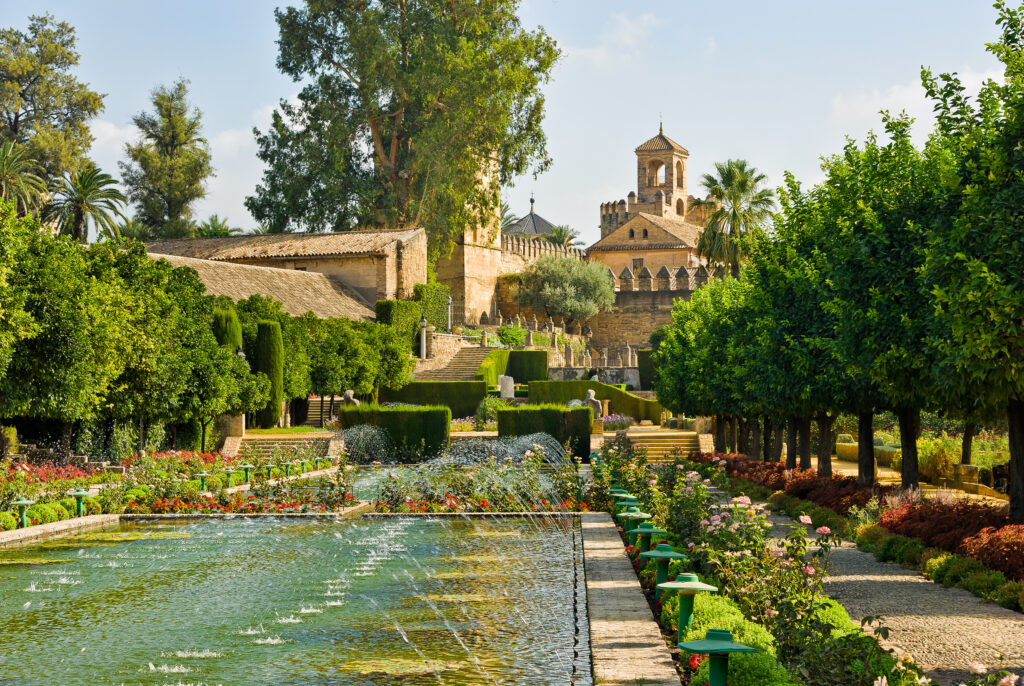
Nature is at its best in Cordoba's Al Arenal park, with its palm trees and vast expanses of green. A superb columned monument adorns the landscape, providing a very pleasant setting to disconnect for a moment right next to the Guadalquivir. Lucky enough to travel to Cordoba in spring? In May, the colorful Féria de Mayo is held. Festive friends, this is an event not to be missed! A funfair is also held in the square in May, with flamenco shows. A true immersion in Andalusian culture!
11. Plaza de las Tendillas, history and strolling
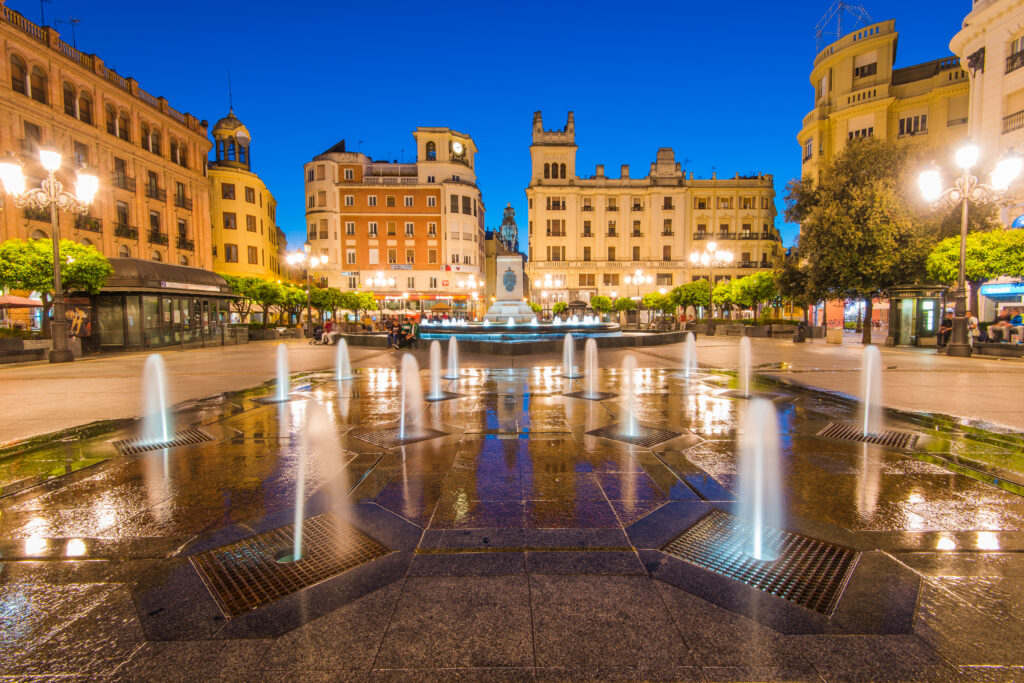
Here you are in the very heart of Cordoba! The Plaza de las Tendillas (named after former small stores) is the city's most central square. Surrounded by beautiful buildings, it's simply sublime. It's a great place to stroll and admire the beautiful statue of the Great Captain, before enjoying a good sandwich or local dish in one of the many nearby restaurants. Surrounded by numerous boutiques, the square and its adjacent streets are ideal for shopping enthusiasts.
Didn't know where to start your cultural tour? You've come to the right place, as there are many points of interest within easy reach of this must-see square:
- the Archaeological and Ethnographic Museum,
- the Plaza de la Corredera,
- the Fine Arts Museum and the Julio Romero de Torrez Museum,
- the Roman Temple of Cordoba, etc.
Look no further than Plaza de las Tendillas, simply The Place to Be.
12. Viana Palace, between Arab and Roman influences
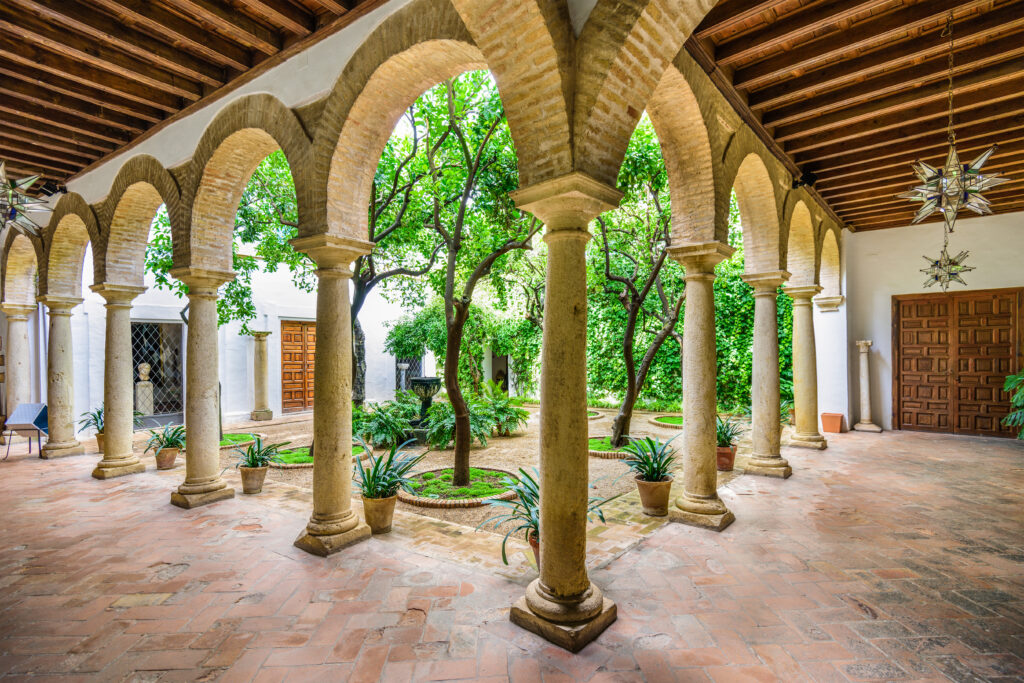
A period building surrounded by lush, colorful natural surroundings, the Palacio de Viana is a must-see in Cordoba. Situated in Place de Don Gome, this majestic palace is surrounded by twelve patios and a sumptuous garden. Each patio is adorned and perfumed with a variety of floral species. An awakening of the senses guaranteed! To the delight of modern visitors, Sophie de Lancaster, the last Marquise de Viana, has preserved the authenticity of this XIVᵉ century palace. In the building's outbuildings, you can admire paintings, mosaics and other tapestries. The superb XVI° and XVII° century library is the highlight of this exceptional visit.
Take advantage of our partner's special rates by booking your tickets for the gardens and patios of the Palais de Viana here.
13. Baños Califales, the Arab baths to visit in Cordoba
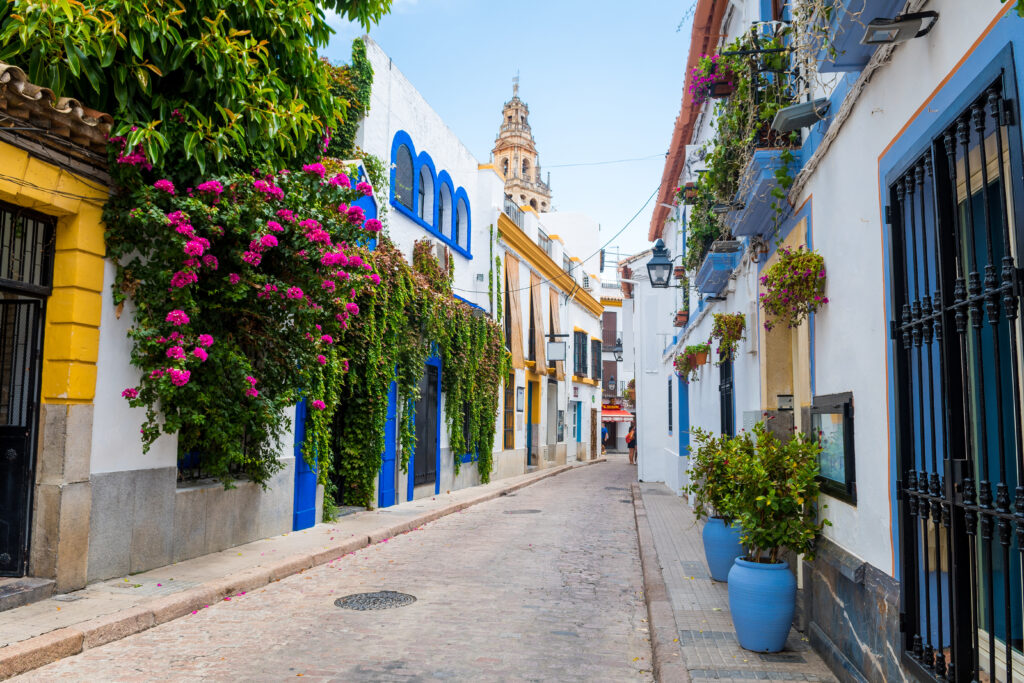
Looking for a low-cost way to visit Cordoba? For just €2.50, visit the Califales Baths, the city's Arab baths that take you on a journey back to the past. Erected in the Xᵉ century under Al-Hakam II, they were originally intended for the exclusive use of the caliph, his harem and his court. The baths were inspired by the layout of Roman baths, with cold, temperate and hot zones arranged in vaulted rooms lit by star-shaped skylights. Accidentally rediscovered in 1961 near the Alcázar and the Mosque-Cathedral, these hammams, which bear witness to Islamic culture, were converted into a museum in 2006. A great cultural visit to make during your stay in Cordoba!
14. The Ethnobotanical Museum and Botanical Garden
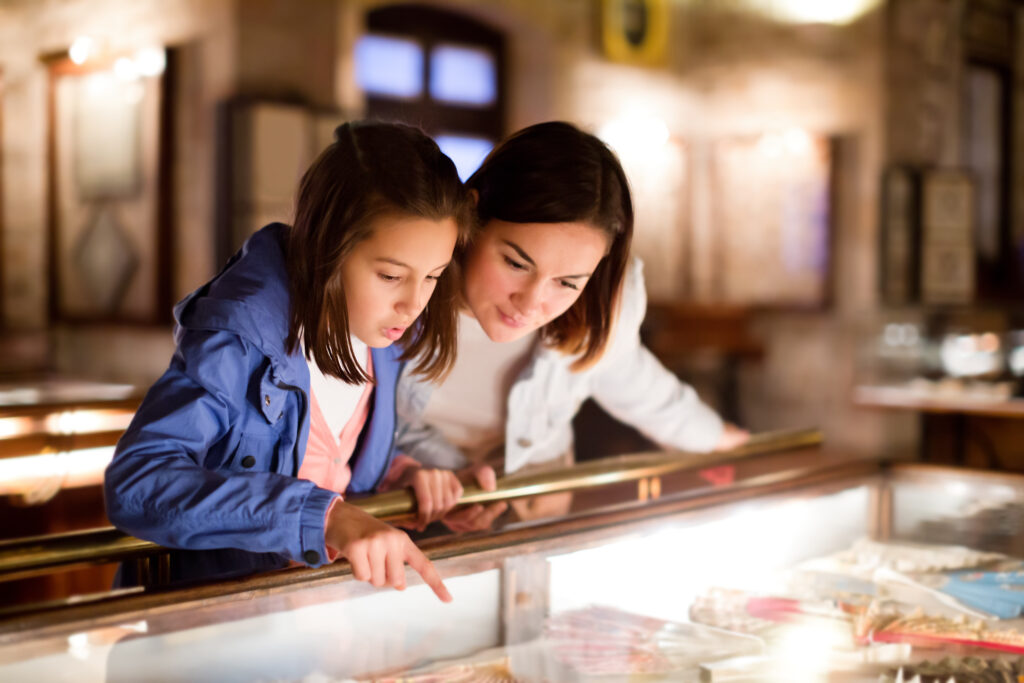
Culture and poetry come together at Cordoba's Ethnobotanical Museum, opened in 1992 on the right bank of the Guadalquivir. In this magical setting, you can explore human-plant interactions in three permanent exhibition halls, featuring :
- ethnobotanical objects,
- transillumination systems,
- interactive panels enhanced by graphic documentation.
The greenhouses showcase American flora, divided into three distinct pavilions. This beautiful museum is part of the Cordoba Botanical Garden, whose open, wooded spaces invite contemplation, with their pretty rose garden and magnificent greenhouses. Your plant tour ends at the arboretum and Molino de la Alegría, a paleobotanical museum with an impressive collection of plant fossils.
15. Taste local Andalusian dishes
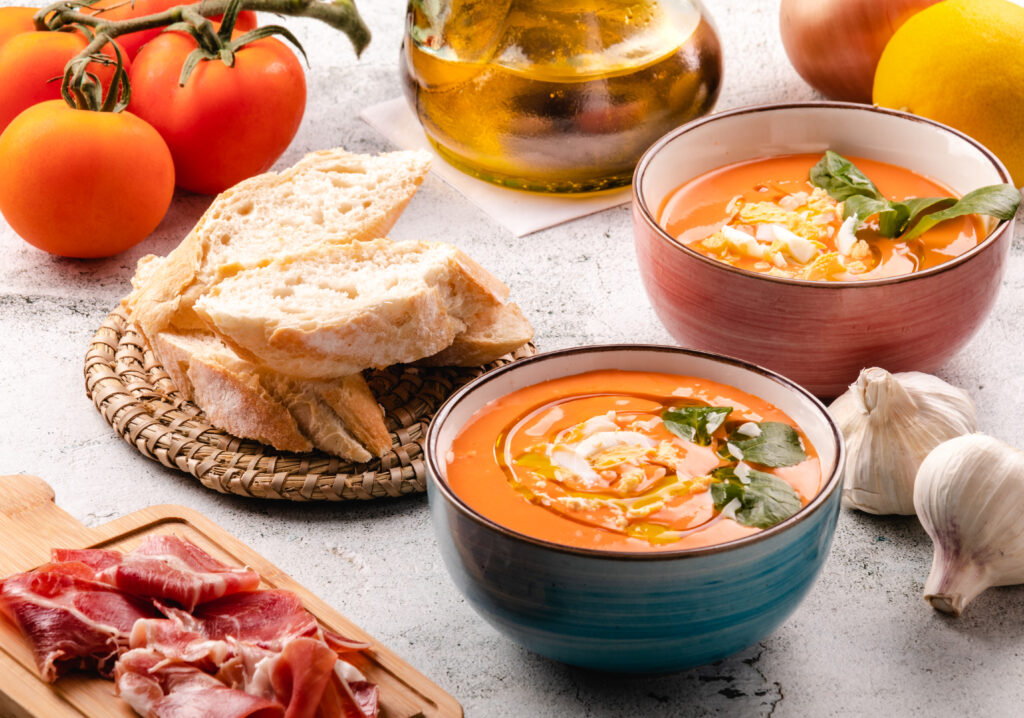
Tasting local specialities is one of the great pleasures of a vacation! Don't limit Spain to its tapas, as the country abounds in succulent regional dishes. In Andalusia, we invite you to try salmorejo, a typical Cordoban cold cream made with olive oil, garlic and tomato. And thanks to Andalusia's strong bullfighting tradition, oxtail is another typical local dish. Rabo de Toro, with its evocative name, is also part of this local tradition. Not your forte? Why not try Flamenquin, a pork tenderloin stuffed with Serrano ham? Once rolled, breaded and fried, it's a pure delight!
Fish lovers will love theanchovies, cooked in a variety of ways, including a vinaigrette. To finish the meal, the typical Cordoban dessert is pastel cordobés. This puff pastry-based dessert filled with candied fruit is a culinary nugget not to be missed!
Where to stay in Cordoba?
Where to stay in Cordoba? It all depends on what you're looking for! The city center, which is modern and close to the main sights, bars and restaurants, is ideal for a quick, car-free stay. Or would you prefer a quieter, more authentic atmosphere? Opt for a hotel or B&B in the San Basilio or Juderia districts.
- The best location
If you want to enjoy all the amenities within easy reach, put your suitcases down at Los Omeyas Hotel, located in downtown Cordoba. Designed in a simple retro style, the hotel enjoys a privileged location, while offering a comfortable stay. Click here to book this downtown establishment.
- The most charming
A real favorite!Hotel Las Casas de la Juderia is 100% Andalusian charm. Colorful, beautifully decorated in an old-fashioned yet modern style, it invites you to relax in total. The flower-filled outdoor spaces and swimming pool complete this dream setting. Book your stay here in just one click.
- The cheapest
The old-fashioned ambience of theHotel Mezquita lends a certain charm to this beautiful Cordoba address. Clean and nicely furnished, the establishment is very well located, close to historic sites. Discover here the modest price of this quality establishment.
Like Seville or Malaga, the beautiful city of Cordoba and its surroundings leave no one indifferent. Between history and modernity, many treasures are revealed at every step. But don't be content with just visiting the Cordoba region: discover the 15 must-sees in Andalusia, an extraordinary region of Spain. In particular, you'll have the opportunity to visit Seville, a magnificent city to be discovered in spring as well asin summer, or even out of season to take advantage of mild, sunny temperatures.
Book ahead below for the hottest things to do in Cordoba:
Tempted by our selection? Take a look at our airfares and book now!


